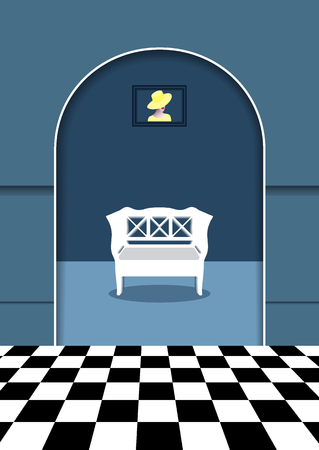Rediscovering Victorian Colour Theory
The Victorian era, spanning from 1837 to 1901, was a period of remarkable innovation and creativity in British interior design. Far from being just a relic of the past, the distinctive colour schemes developed during this time reflect not only the technological advances of the Industrial Revolution but also the deep social and cultural shifts within British society. Victorian colour palettes were heavily influenced by new pigments and dyes, making rich shades such as deep greens, dusky blues, burgundies, and ochres widely accessible for the first time. These hues were more than decorative choices—they symbolised status, prosperity, and a connection to both nature and global trade networks. As a result, each room in a typical Victorian home often had its own unique palette, chosen carefully to convey warmth, sophistication, or opulence depending on its intended function. Today, reviving these authentic Victorian colour schemes allows homeowners to celebrate an important chapter in British heritage while imbuing modern spaces with timeless character and narrative depth.
2. Translating Historic Hues for Contemporary Homes
When reviving Victorian colour schemes for today’s interiors, it’s essential to balance authenticity with the demands of modern living. The Victorian era was famed for its rich, layered palettes—think deep greens, dusky blues, and bold burgundies—yet these tones can be seamlessly adapted to suit contemporary British homes. Choosing the right colours involves more than a faithful recreation; it requires an understanding of how heritage shades can complement current UK design trends such as open-plan layouts, abundant natural light, and minimalist furnishings.
Guidance on Selecting Authentic Victorian Colours
To begin, consider the original Victorian palette but soften or update the shades for a fresher feel. For example, opt for muted olive instead of dark bottle green or a gentle indigo rather than intense navy. These subtle adjustments allow period-appropriate hues to harmonise with modern fixtures and finishes. Here’s a guide to some popular Victorian colours and their contemporary equivalents:
| Victorian Shade | Modern Equivalent | Best Used In |
|---|---|---|
| Bottle Green | Olive or Sage Green | Kitchens & Living Rooms |
| Prussian Blue | Powdered Indigo | Bedrooms & Hallways |
| Burgundy Red | Muted Claret or Raspberry | Dining Areas |
| Creamy White | Off-white or Soft Grey | Ceilings & Woodwork |
| Mauve | Dove Grey-Lavender | Bathrooms & Bedrooms |
Integrating Period Colours with Modern Trends
The secret lies in combining these historic hues with today’s most popular UK interior elements. Pairing dusky tones with crisp white skirting boards, for instance, nods to tradition while ensuring spaces remain bright and inviting. Accent walls painted in heritage shades can add depth without overwhelming open-plan spaces. In addition, use matte finishes—favoured in both Victorian times and modern design—for a sophisticated look that’s easy to maintain.
Practical Tip:
If you’re unsure about committing to bold colour across an entire room, start with accent features like fireplaces, alcoves, or cabinetry. This approach allows you to introduce authentic character without overpowering your interior scheme.

3. Preparing Your Space: Walls, Woodwork, and Architectural Details
Before you introduce authentic Victorian colour schemes into your modern interior, proper preparation of your surfaces is essential to achieving a professional finish and preserving the charm of period features. Start by carefully inspecting the walls for any signs of damage, particularly if your property boasts original British plasterwork. Traditional lime plaster, often found in Victorian homes, requires gentle handling—avoid harsh scraping and instead opt for a soft brush to remove dust and loose material. Where cracks or holes exist, use a breathable filler suitable for historic substrates to maintain the integrity of the wall.
When dealing with woodwork such as skirting boards, picture rails, or ornate cornices, it’s important to strip away any flaking paint using a scraper or specialist remover rather than sanding aggressively, which can harm delicate detailing. Always test for lead paint in older properties—a common feature in period homes—and follow local safety guidance when removing it. Once clean and sound, lightly sand the surface to provide a key for new paint.
Architectural features like ceiling roses, dado rails, and fireplaces are integral to Victorian interiors. Use a fine brush or vacuum with a soft attachment to clear accumulated dust from intricate mouldings. If any repairs are necessary, match materials as closely as possible to the original—lime-based plasters and natural wood fillers maintain authenticity while ensuring longevity.
Finally, before you reach for your paintbrush, protect flooring and adjacent surfaces with dust sheets and masking tape. Apply a quality primer compatible with both historic materials and modern paints; this not only improves adhesion but also ensures the vibrancy of your chosen colours shines through. Taking these best practices will help preserve your home’s period character while allowing you to enjoy a refreshed and beautifully painted interior.
4. Application Techniques: Achieving Authentic Victorian Finishes
Bringing Victorian colour schemes into the modern home isn’t just about choosing the right shades—it’s about how you apply them. Authenticity is achieved through attention to detail, correct layering, and a thoughtful selection of finishes. Below is a step-by-step guide tailored for British homes, blending traditional effects with today’s reliable materials.
Step 1: Selecting Paint Types
Victorian interiors originally used limewash, distemper, and oil-based paints. While these are less common now, modern equivalents such as eco-friendly emulsions and durable eggshells offer similar depth and finish. For walls, opt for matt or low-sheen emulsion; for woodwork, choose water-based satinwood or eggshell to replicate period subtleties.
| Surface | Traditional Paint | Modern Alternative |
|---|---|---|
| Walls | Limewash/Distemper | Matt Emulsion |
| Woodwork | Oil-based Gloss/Eggshell | Water-based Satinwood/Eggshell |
| Ceilings | Limewash | Flat Matt Emulsion |
Step 2: Preparing Surfaces
Preparation is key to achieving a flawless finish. Sand woodwork lightly and fill any imperfections. Wash walls down with sugar soap to remove grease and dust. Always prime bare surfaces with an appropriate primer; this ensures longevity and true-to-colour results.
Step 3: Layering Methods
The Victorians often built up colour using multiple thin coats. Apply two or three light layers rather than one thick coat to create richness and durability. Allow each coat to dry fully before adding the next—this is especially important in Britain’s variable climate.
Tinting and Undercoats
If replicating bold Victorian hues, start with a tinted undercoat that matches your topcoat shade. This enhances the depth of colour and prevents patchiness, ensuring even coverage on both old and new plaster.
Step 4: Decorative Finishes
For added authenticity, consider period techniques such as:
- Sponge stippling—achieves soft, textured walls typical of late-Victorian parlours.
- Cornice highlighting—pick out mouldings in contrasting or gilded shades for dramatic effect.
- Dado rails & panelling—use darker tones below the rail and lighter shades above for classic proportioning.
Finishing Touches
Once all coats are dry, inspect for touch-ups. Use fine sandpaper between coats on woodwork for an ultra-smooth result. Modern clear wax or specialist varnish can be applied sparingly to wood trims for added protection without compromising period aesthetics.
5. Blending Old and New: Accents, Furnishings, and Accessories
Pairing Victorian colour schemes with modern interiors is all about achieving a harmonious balance between period charm and contemporary comfort. Begin by selecting a key Victorian palette—think deep greens, rich burgundies, or classic navy—and use these shades as your backdrop. Modern British design staples such as minimalist sofas in neutral hues or sleek oak tables work well when placed against these bold walls, grounding the room without overwhelming the heritage tones.
Accentuating with British Craftsmanship
Opt for accents that nod to both eras: velvet cushions in jewel colours bring Victorian opulence, while geometric throws or simple ceramic vases keep the space feeling current. Look to iconic British brands like Ercol or Habitat for pieces that bridge tradition and modernity—perhaps a Windsor chair reimagined in a contemporary finish or a timeless Anglepoise lamp in brass.
Layering Textures for Depth
Victorian interiors were known for their tactile richness. Layer plush rugs over wooden floors, add fringed lampshades, and introduce metallic accessories in brass or copper. These details echo the past but remain relevant when paired with streamlined furniture and uncluttered layouts typical of modern British homes.
Creating Cohesion through Repetition
To avoid visual chaos, repeat colours from your Victorian scheme throughout the space—perhaps a maroon accent wall complemented by matching piping on cushions or artwork frames. This repetition ties old and new elements together, resulting in a cohesive and inviting interior that celebrates both history and innovation.
6. Maintenance and Upkeep: Caring for Painted Surfaces
Preserving the beauty and vibrancy of Victorian-inspired colour schemes in a modern British home requires thoughtful maintenance, particularly given the UK’s variable climate. Here are practical tips to ensure your historic hues remain striking year after year.
Stay Vigilant Against Damp
The British climate is notorious for its dampness, which can quickly undermine painted surfaces. Regularly inspect walls—especially in older properties—for signs of moisture ingress or condensation. Address leaks promptly and consider using dehumidifiers or improving ventilation in high-risk areas such as kitchens, bathrooms, and basements.
Choose Quality Finishes
Opt for high-quality, washable paints with mildew-resistant properties for rooms prone to humidity. Eggshell and satin finishes offer a traditional look while providing extra durability, helping colours like deep burgundy, sage green, or rich ochre maintain their depth and sheen despite daily wear.
Routine Cleaning
Dust and airborne pollutants can dull vibrant colours over time. Gently dust painted surfaces with a soft cloth or vacuum using a brush attachment. For marks or stains, use a mild soapy solution and avoid abrasive scrubbers that could damage delicate detailing or period mouldings.
Treat Touch-Ups with Care
Keep leftover paint for small touch-ups. When refreshing chips or scratches, feather out the new paint to blend seamlessly with the existing finish. Test patch repairs in inconspicuous areas first, as subtle differences in sheen may be more noticeable under certain lighting conditions common in British homes.
Protect from Sunlight
Although the UK isn’t known for strong sunlight, prolonged exposure through south-facing windows can fade pigments. Use sheer curtains or UV-protective window films to shield bold Victorian palettes from bleaching, especially in drawing rooms or conservatories where natural light is abundant.
Seasonal Inspections
Make it a habit to assess your painted surfaces seasonally—spring cleaning is an ideal time. Look for flaking, peeling, or discolouration that may require professional attention, particularly on ornate cornices or woodwork that are hallmarks of Victorian design.
By combining these preventative measures with regular care tailored to the unique demands of the British climate, you’ll protect your investment and keep your Victorian-inspired interiors looking freshly revived for years to come.


